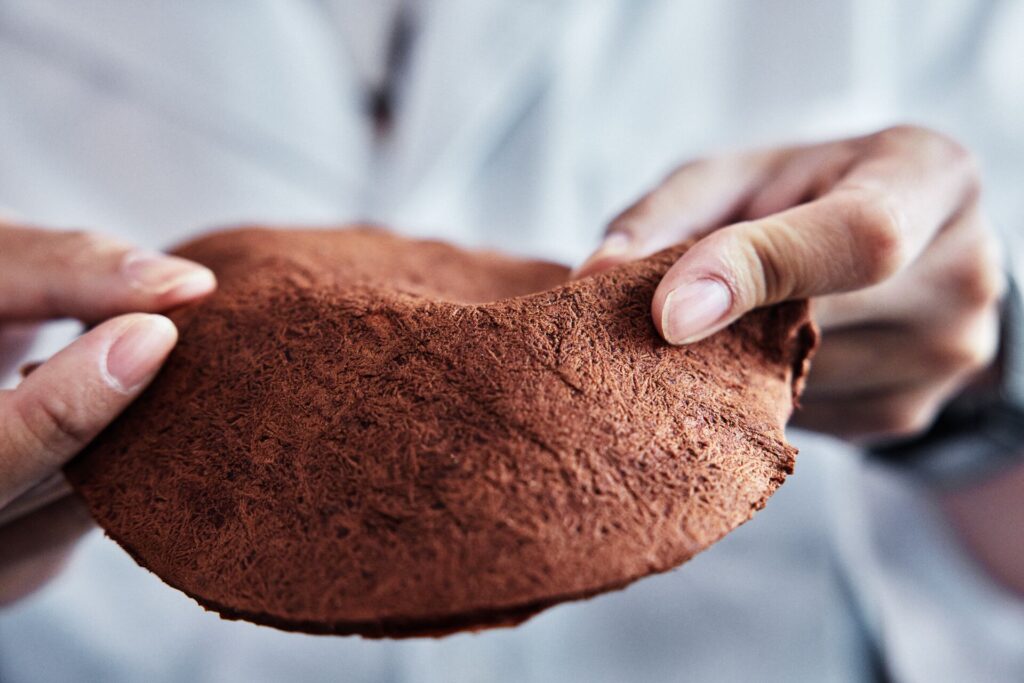



Much of the recycled leather contains harmful chemical residues, such as chromium VI, which result from the tanning process. These chemical residuals are carried through in the conventional recycling process.
Through the Planet First programme, HKRITA has developed a way to separate the chromium VI from the shredded leather fibers and create a bio-based, alterative to the PU and PVC binders, thereby creating a new form of recycled leather that is chromium-free, biodegradable and recyclable.
Key technological advancements:
- Utilizing environmentally friendly bio-based binders (e.g., sugar or protein) as substitutes for synthetic PU and PVC, resulting in a new sheet of leather.
- Employing a reaction process that prevents the formation of toxic chromium VI during recycling.
- Successfully producing collagen from waste leather cuts, which can be blended with leather scraps to form a leather sheet.
Industry benefits
- Mitigating environmental harm and health concerns stemming from chrome tanning in leather production.
- Providing an eco-friendly alternative to traditional recycled leather.
- Incorporating raw collagen fibers that enhance the tactile experience.
- Ensuring the recycled leather is durable enough for further manufacturing.

